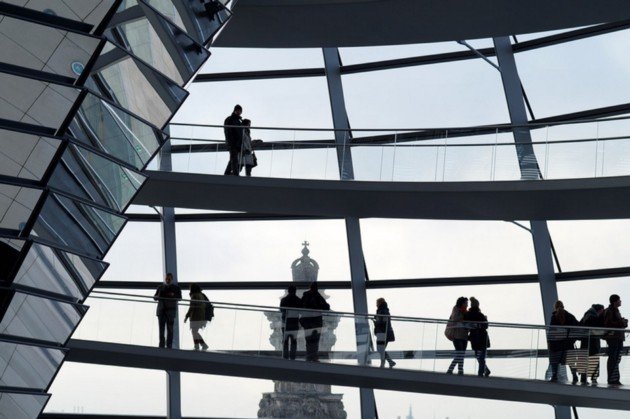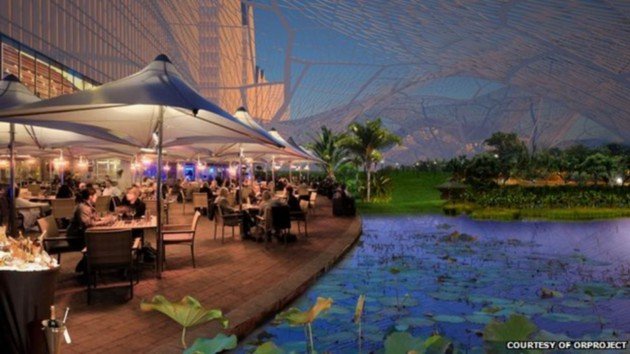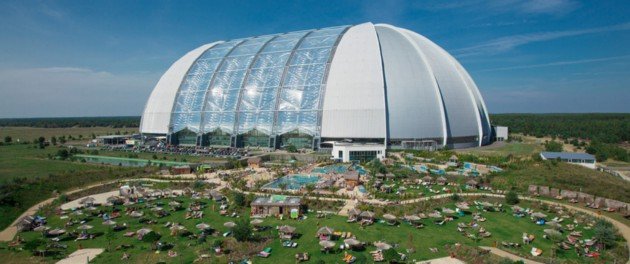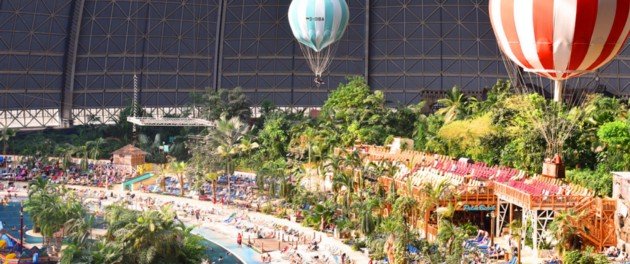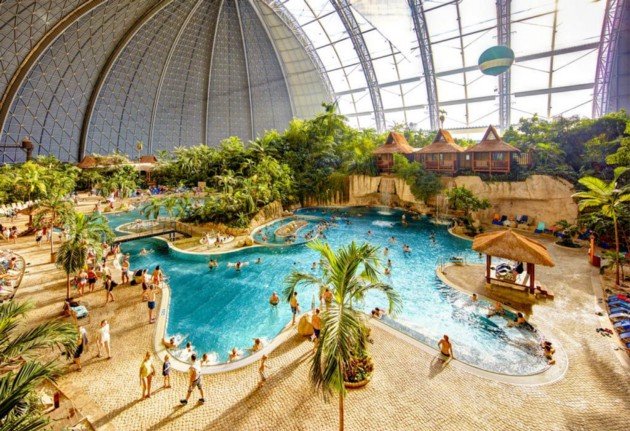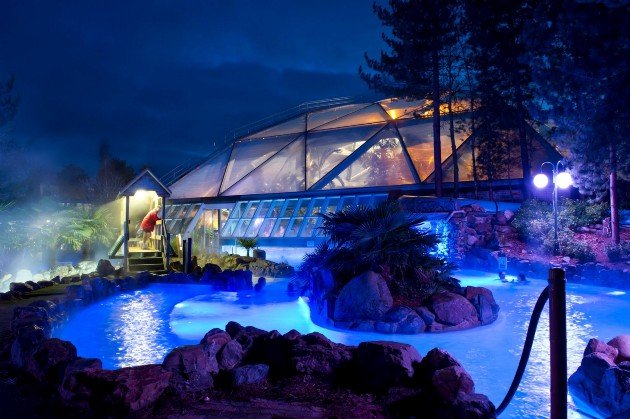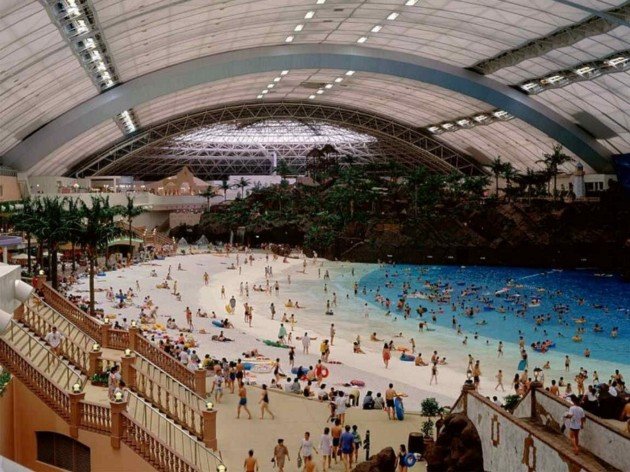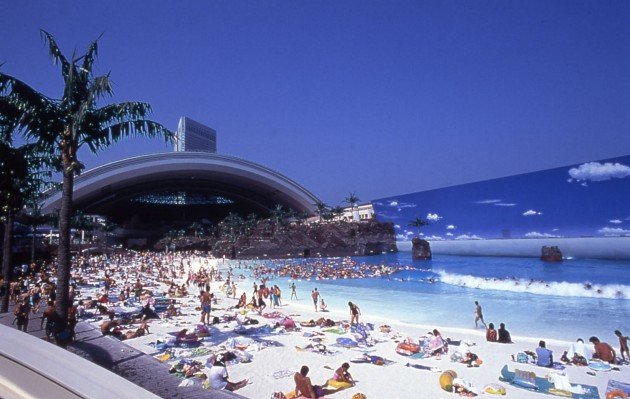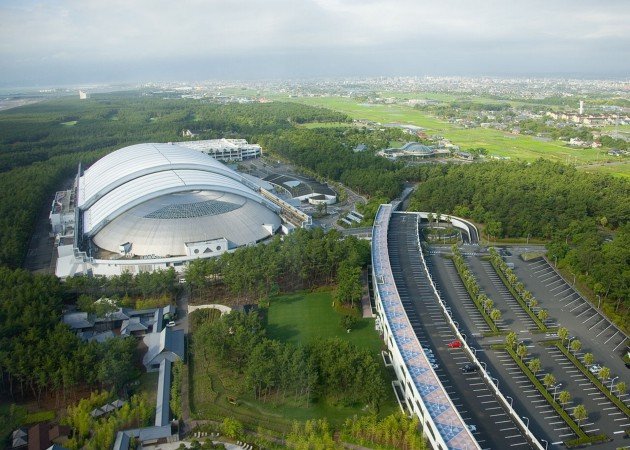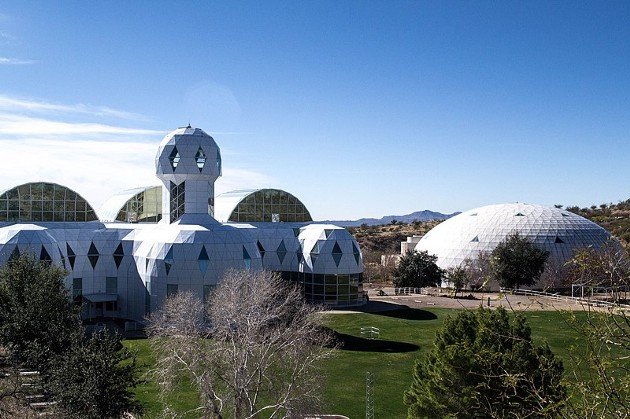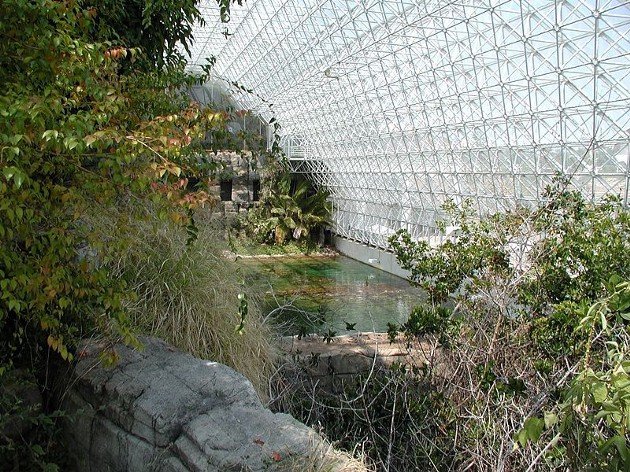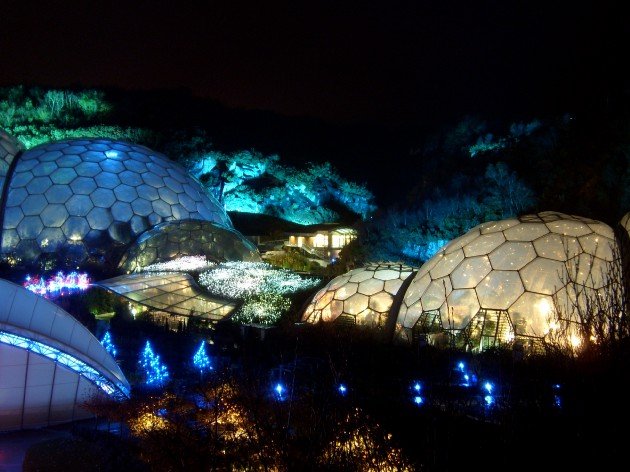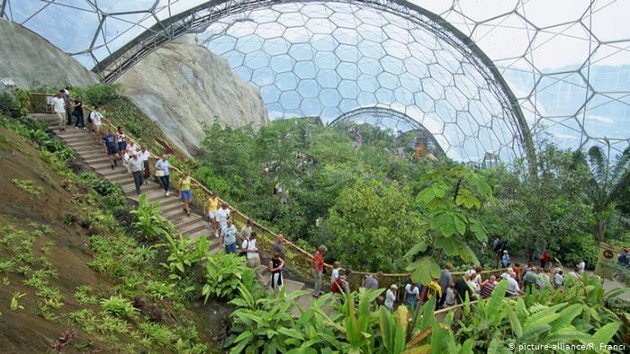Surviving in Domes on a Warmer Earth Will Prepare Us for Mars
I of course don’t mean to suggest we abandon efforts at reducing carbon emissions and repairing damage done to the atmosphere and ocean since the industrial revolution. Still, it’s a strange disconnect in my mind that the same people who agree that we can survive in domed cities on Mars don’t believe we’ll survive climate change.
Many of them imagine it as an extinction event, the end of the anthropocene. Does that make sense? Wouldn’t it in fact be vastly easier and cheaper to build enclosed colonies on a much warmer Earth than doing the same on the Moon or Mars? We wouldn’t need to send materials by rocket. The pressure differential would be nonexistent. Also no radiation to contend with.
A terrestrial domed city doesn’t need to contain an internal atmosphere against an external vacuum, only maintain a thermal differential and perhaps exclude unwanted gases like methane and hydrogen sulfide (if the clathrate gun hypothesis turns out to be true and mass quantities of methane ice in the permafrost and seafloor deposits escape into the atmosphere).
Domed cities have long been a popular staple of science fiction. Plans to dome over major cities as a means of saving money on repair costs following major storms date back to the 1960s, when Buckminster Fuller proposed a 3km diameter dome over Manhattan:
Air pollution was an increasingly serious problem at that time, but attitudes were different. The connection between industrial/automotive conditions and the greenhouse effect wasn’t yet common knowledge, and there didn’t yet exist a well organized, muscular environmental movement to force political action on issues like poor air quality.
Having industrialized more recently than the US, China is at a similar stage where the public’s attitude towards pollution is concerned. To whit, Beijing’s air quality has become so abysmally poor that several enormous “air supported structures”, basically inflatable dome tents, are now in use both to contain noxious emissions at the point of production and conversely to exclude those emissions in places where people might go to enjoy clean air recreationally (such as parks).
If this seems to you like a band-aid over the gaping wound of air pollution you’re right. But that’s humanity’s modus operandi. We don’t get to fixing problems until they’re life threatening, and even then, not if we can devise some sort of workaround. That’s essentially what these inflatable domes are, and they’re also finding use at schools to provide clean air for students during outdoor gym class:
Is this really the future we’ve chosen? Struggling along inside artificial bubbles of clean air as the rest of the pollution cursed Earth chokes to death on the emissions of our twentieth century industrial excess? I doubt it, stuff like this should wake people up, even now the Chinese government leads the world in green energy projects.
These exercises in enclosed living space engineering furnish us with lessons applicable to humanity’s future in space, though. If we manage to expand offworld in a big way during this century (and it really is now or never) then necessarily before long a majority of humans will be living in artificial habitats of one sort or another.
This isn’t cause for distress. A spacefaring humanity will unavoidably one day grow in number far beyond what the Earth alone can support. There simply won’t be planetary living space for everybody that wants it. Rather than being a luxury, living in space will become the new norm, while Earth becomes the solar system’s Beverly Hills.
Speaking of rare living spaces reserved for the well to do, there exist today several examples of faux naturalistic landscapes enclosed by domes. Not intended for residential use, rather as luxury resorts which simulate warm, tropical conditions in parts of the world where the weather is cold and nasty much of the year. Tropical Islands Resort in Germany is one such example.
Built within the cavernous interior of a formerly derelict airship hangar, the Tropical Islands Resort is in fact so large, the superstructure is maintained by workers in helium balloons. You can just make out one of them in the image above, that’s what the little white ball is. Yes, astonishingly, you can use aircraft (of a particular sort) within this structure.
The balloons are also available to tourists for short rides. There’s a wave pool designed to simulate the appearance of the seaside, complete with a sandy indoor beach to relax on. There are bars, cafes, restaurants, night clubs and a variety of accommodations to stay in.
Huts near the beach for example, as well as condos and more standard hotel rooms. As you might expect, the cost of heating all that air year-round is enormous, but so is the throughput of paying tourists.
During the day, the sliding sun shade retracts so that much of the interior lighting is natural. Some of the hut styled accommodations are visible above overlooking one of several heated pools. All purchases are made via RFID wristbands loaded with credits via an app.
Still a somewhat depressing facsimile of an actual tropical resort, but nevertheless an incredible option to have in such a cold country, and a powerful weapon against seasonal affective disorder. Would you not avail yourself of it regularly, if you lived nearby?
This brings us to Center Parcs. Similar concept, somewhat smaller execution but many, many more locations. This chain of indoor resorts can be found throughout the UK offering year-round access to an artificially maintained tropical climate. Given the usual weather in the UK, it’s not difficult to see the appeal. If anything it’s a mystery why we don’t have these in the Northern US or Canada.
A typical Center Parc facility consists of both numerous outdoor activities (such as ziplines, tree platforms/rope bridges, archery, horseback riding, boating) with a complex of connected domes housing heated pools landscaped to resemble a tropical biome. The offerings are very similar to what you’ll find that the Tropical Islands Resort in Germany, albeit with a more balanced focus between indoor and outdoor attractions.
The outdoor pools are also heated and reportedly a delight to use during especially cold, snowy weather. One of the facilities boasts a water slide that takes you outside the dome into the cold (as seen above) before returning you back to the dome’s interior to splash down in the pool.
Effectively a combination water park and greenhouse, Center Parcs complexes are a study in how to engineer indoor naturalistic spaces to please the averaged tastes of H. Sapiens. This is the sort of thing we might expect to see on cruise ships, if they weren’t space constrained.
Seagaia Ocean Dome is the Japanese take on this concept. It opened in 1993 during an economic boom, which goes a long way in explaining how it was approved for construction when there was a real beach less than a mile away. Costing twenty bucks a head to enter, it should surprise nobody that it closed in 2007 when anybody who wanted the beach experience could just drive a little further and enjoy the actual beach.
Another cool but confusing feature was the stadium style retracting roof. Seagaia Ocean Dome wasn’t built someplace with nasty weather. It was built where the weather was usually nice enough to leave the roof open, begging the question of what the point was, besides the novelty of an artificial beach. The concept was sound, as we’ve seen with Center Parcs and Tropical Islands. This particular implementation was of dubious value however.
You can literally see the ocean from Segaia Ocean Dome. It really is a head scratcher why anybody thought this was a good idea. Still, I felt it belonged on this list because it demonstrates yet more useful concepts which may one day be applied to colonies off the Earth.
Not the retracting roof presumably, unless there’s some reason you want to blast a bunch of tourists into vacuum at once (I can think of a few) but the interior planning, layout, ergonomics, air and water treatment, etc.
Biosphere II belongs on this list, though I won’t cover it in much detail as it’s common knowledge. If ever I feel like opening that can of worms, I’ll dedicate a proper full article to it. For the purposes of this article, sufficed to say that the purpose of Biosphere II (Biosphere I was considered to be the Earth) was to replicate Earth’s ecosystem in microcosm such that it could all self-sustain in a closed loop, nothing coming in or leaving.
As is well known by all, the experiment was a failure. Not definitively so, as it wasn’t executed in any sort of rigorously scientific way to begin with, the project having been the brainchild of what was essentially a new age cult. That fact didn’t make it into most media coverage of the project. The failure stained the concept severely enough that it may be some decades yet before it can be tried again, which is a shame given the immense promise it holds.
I’ve written about it before, but this article would be incomplete without mentioning the Eden Project. Situated in Cornwall England, it’s not so much a resort exactly, lacking pools, restaurants and the other amenities present in the likes of Center Parks and Tropical Islands. Rather it’s something like a nature conservatory, but one which replicates tropical rainforest and high desert biomes in the rainy, dreary English countryside.
It would be a long time following the first boots on Mars before something this size could be built. Many generations would live underground first, building out the industrial infrastructure needed to self-support. But eventually domestic mining and manufacturing would grow to a point where they could afford to build habitat space not reserved for essential applications.
Prior to that point there wouldn’t be resources to spare for such enormous habitable volumes which served no immediately useful purpose other than psychological comfort. However recreating enclosed chunks of the Earth colonists left behind, once the budget permitted such projects, may confer meaningful benefits related to emotional wellbeing.
It isn’t difficult to imagine the toll it would take on your mind to spend every waking hour either underground in sealed off, pressurized lava tubes or sterile metal cylinders on the surface. You’d eventually lose it if you couldn’t touch green plants, dig your toes into sand, and sit under the shade of a tree.
The engineering challenges behind such indoor approximations of nature have largely been worked out on Earth already, albeit for less inspiring, more worrisome reasons. Domes aren’t a solution for climate woes after all. More of a cool looking, futuristic band-aid. What they are is a solution for living off the Earth in a comfortable and dignified way, rather than being packed together like sardines in a tin.
Consider these developments as unintentional space analogue exercises like NEEMO or Desert RATS, then. Fine resorts for escaping the winter blues, but also glimpses of how future generations will live offworld, in some of the more upscale colonies. Before we do it on Mars, we’ll do it on Earth. “As above, so below”, true in the future as it is today.
